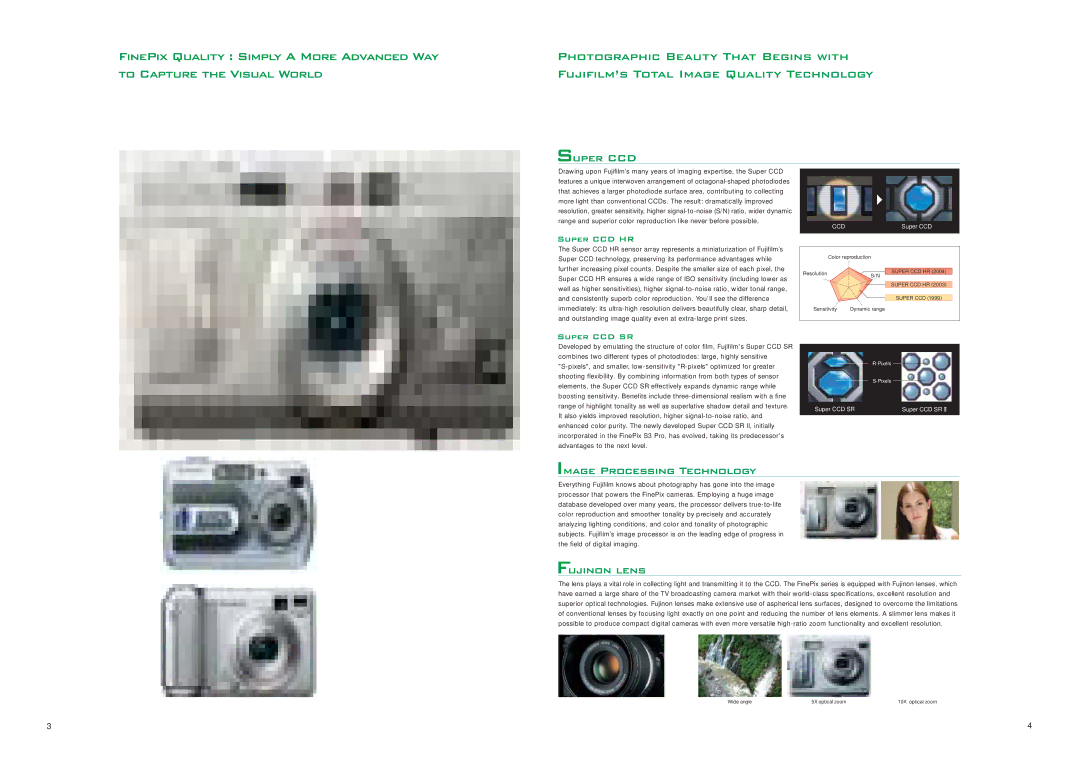digital camera specifications
Fujifilm has established itself as a formidable player in the digital camera market, producing devices that appeal to both professional photographers and enthusiasts alike. The brand's digital cameras are renowned for their impeccable image quality, advanced technology, and user-friendly interfaces.One of the standout features of Fujifilm cameras is their unique X-Trans CMOS sensor technology. This sensor utilizes a randomized pixel arrangement to minimize moiré and false colors, resulting in stunningly sharp images with rich detail and vibrant colors. This technology is particularly beneficial for landscape and portrait photography, where color fidelity and detail are paramount.
Fujifilm's commitment to color reproduction is further exemplified in its Film Simulation modes. These modes replicate the look and feel of classic Fujifilm films, allowing photographers to produce images with distinct styles right out of the camera. From the soft tones reminiscent of Velvia to the muted shades of Acros, these simulations offer a creative palette that adds character to every shot.
Autofocus performance is another key aspect of Fujifilm’s digital cameras. Many models feature advanced phase-detection autofocus systems that quickly and accurately lock onto subjects, making it easier to capture fast-moving subjects in sports or wildlife photography. Additionally, face and eye detection capabilities ensure that portraits are sharp and well-focused, a feature that can significantly enhance the quality of portraiture.
Fujifilm also embraces innovative connectivity options. Most of their cameras come equipped with Wi-Fi and Bluetooth, enabling seamless sharing of images to smartphones or tablets. This integration allows photographers to quickly upload their work to social media or cloud storage without the hassle of transferring files manually.
The ergonomics and design of Fujifilm cameras deserve special mention as well. With a retro aesthetic reminiscent of classic film cameras, these devices are not only visually appealing but also functional. The tactile dials and customizable buttons provide easy access to essential settings, allowing photographers to make quick adjustments in the field.
Finally, Fujifilm’s commitment to video quality is evident in several of its models, offering 4K recording capabilities, slow-motion video, and a variety of built-in filters and effects. This versatility makes Fujifilm cameras a great choice for creators looking to capture high-quality video content alongside stunning still images.
In conclusion, Fujifilm digital cameras stand out for their advanced sensor technology, exceptional image quality, versatile features, and a design that melds nostalgia with modern functionality. Whether you are a seasoned pro or just starting your photography journey, Fujifilm offers a range of options that can meet diverse creative needs.

